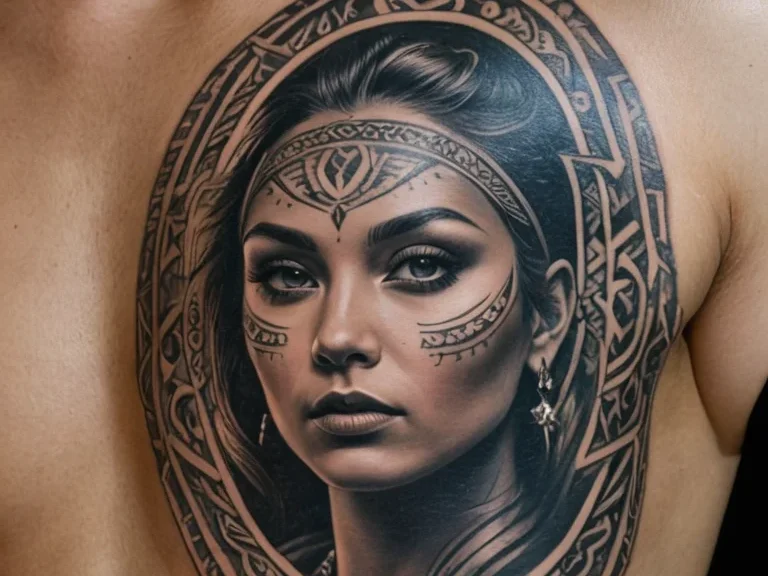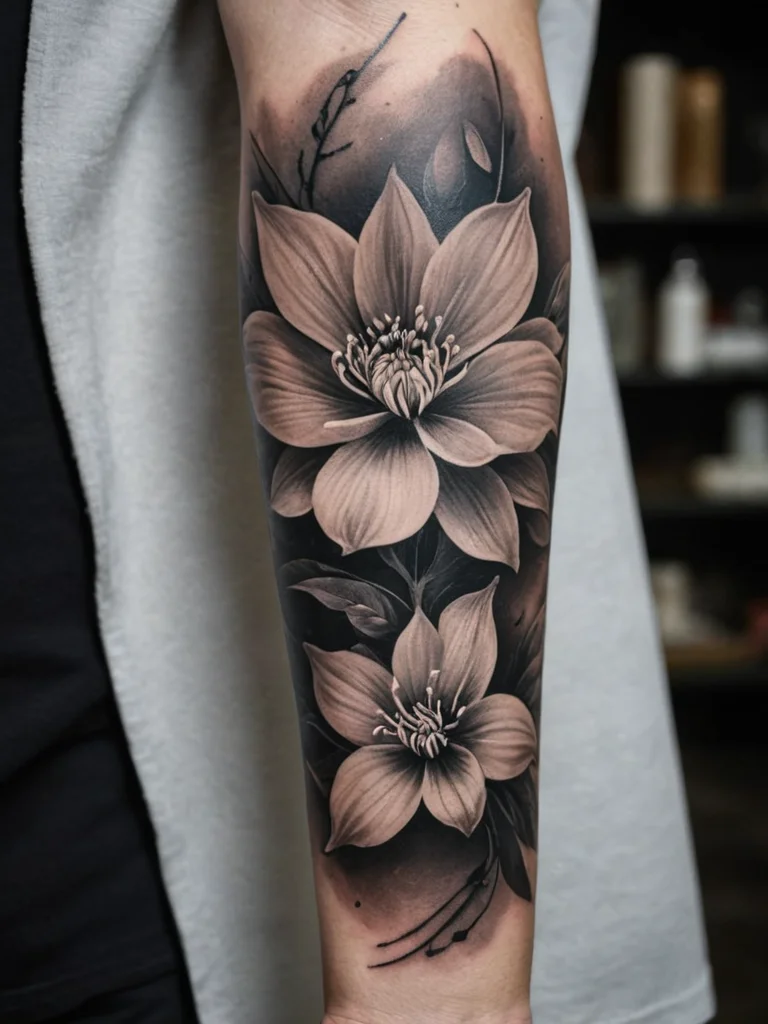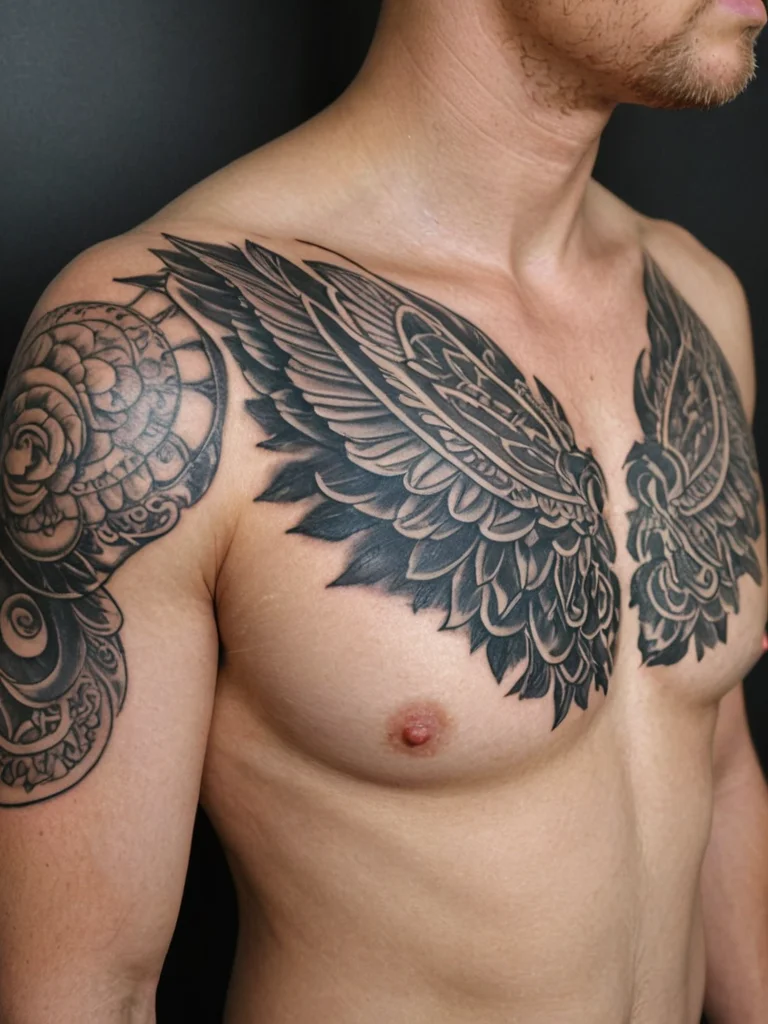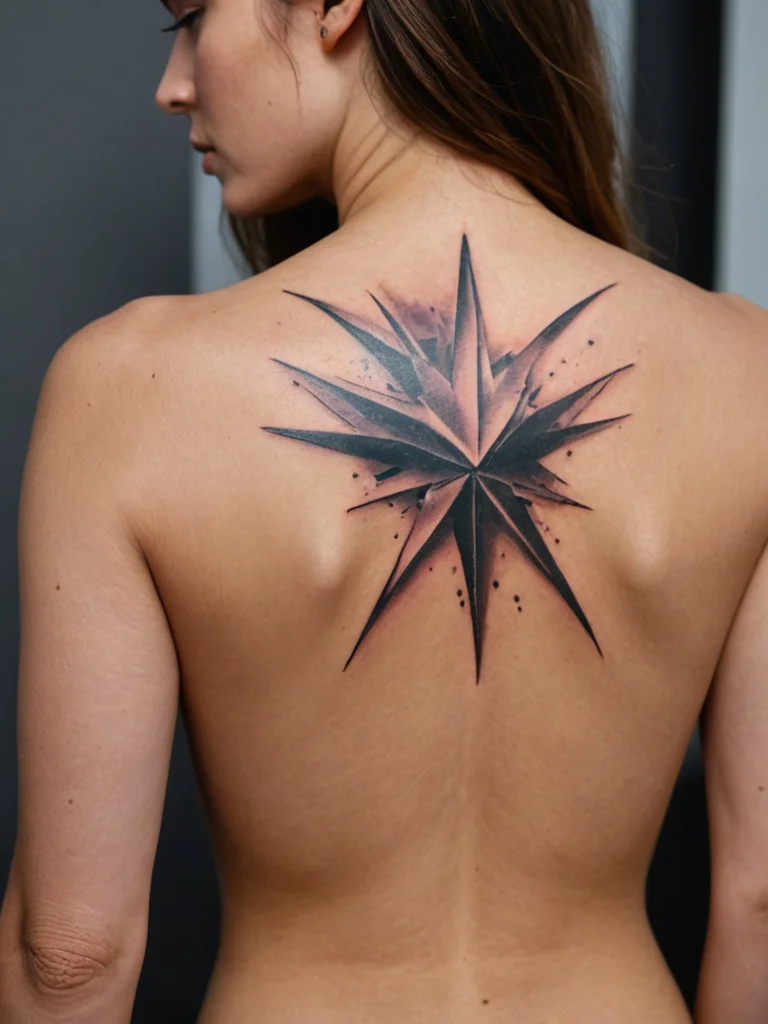In the vast and ever-evolving landscape of tattoo art, certain styles emerge with a distinctive boldness that captures attention and sparks conversation. Among these, the blackout tattoo stands out as a powerful statement, characterized by its extensive use of solid black ink to create impactful designs. This style is not merely about covering skin; it’s a deliberate artistic choice that transforms the body into a canvas of abstract patterns, geometric precision, and deep, resonant visual statements. As tattoo enthusiasts and artists alike delve deeper into exploring diverse aesthetic avenues, understanding the nuances of blackout tattooing becomes increasingly important. This article aims to demystify this striking style, guiding you through its definition, the motivations behind its adoption, the intricate process involved, and crucial considerations for those contemplating this bold form of body art.
What exactly is a blackout tattoo? Defining the bold style
At its core, a blackout tattoo is a style of body art characterized by the extensive application of solid black ink, often covering significant portions of the body. Unlike traditional tattoos that utilize linework, shading, and color to depict specific imagery or symbols, blackout tattoos often focus on large, solid areas of black. This can manifest in various ways, from intricate geometric patterns and abstract shapes to complete coverage of limbs or torso. The effect is undeniably dramatic, creating a stark, graphic presence that emphasizes form and texture over representational imagery. Tattoo artists often describe it as a form of wearable art that plays with the contrast between the inked skin and the natural skin tone, creating a unique interplay of light and shadow. It’s important to distinguish blackout tattoos from simply having a lot of black ink; the style is defined by its intentional use of large, opaque masses of black to create a cohesive design, rather than scattered black elements. Think of it as a sculptural approach to tattooing, where the ink itself becomes the medium for defining form and volume on the body’s curves and contours. This can involve covering existing tattoos, creating new, bold statements, or a combination of both, resulting in a powerful and unified aesthetic.
Why choose blackout? Exploring the motivations and aesthetics

The decision to get a blackout tattoo is deeply personal and often driven by a confluence of aesthetic preferences, individual expression, and sometimes, a desire for transformation. For many, the appeal lies in the sheer visual impact of the style. The deep, unblemished black creates a striking contrast against the skin, making a bold and unforgettable statement. It’s a style that commands attention, often admired for its clean lines, geometric precision, and the way it can redefine the perceived shape and form of the body. Some individuals are drawn to the abstract nature of blackout tattoos. They offer a departure from traditional figurative tattoos, embracing a more modern, minimalist, or even avant-garde aesthetic. This can be particularly appealing to those who appreciate art that is less about literal representation and more about pure visual language and form. The solid black areas can also be incredibly flattering, contouring and accentuating the body’s natural lines and musculature in a way that few other tattoo styles can achieve. For others, blackout tattoos serve a more functional purpose: covering up old or unwanted tattoos. What might have once been a collection of disparate pieces can be unified under a bold blackout design, effectively erasing the past and creating a fresh, cohesive canvas. This act of covering can be symbolic, representing a new chapter, a fresh start, or a reclaiming of one’s body. The commitment involved in a blackout tattoo also speaks to a certain dedication to the art form. It requires patience, a significant investment of time and resources, and a strong sense of personal conviction. This dedication is often part of the appeal for enthusiasts who see their body art as a serious, lifelong commitment and a profound form of self-expression. It’s a testament to the wearer’s vision and their willingness to fully embrace a particular aesthetic. Furthermore, the sheer artistry involved in executing large-scale blackout pieces is a draw for many. It requires immense skill from the tattoo artist, a deep understanding of how black ink behaves on the skin, and a keen eye for composition and flow. The aesthetic can range from smooth, matte surfaces to designs that incorporate negative space or subtle variations in texture, showcasing the versatility within this seemingly simple style.
The blackout tattoo process: What to expect from consultation to healing

Embarking on the journey of a blackout tattoo involves a structured process, beginning long before the needle touches your skin. The initial and arguably most crucial step is the consultation. This is where you’ll meet with a tattoo artist who specializes in or has experience with blackout work. It’s an opportunity to discuss your vision, the placement, size, and overall concept. A good artist will listen carefully, offer professional advice based on their expertise, and assess the feasibility of your ideas, considering your skin type, body contours, and any existing tattoos you wish to incorporate or cover. They will also discuss the potential pain levels associated with the chosen areas and the estimated number of sessions required. Be prepared to show the artist reference images of blackout tattoos you admire, but also be open to their creative input. Following the consultation, the artist will likely create a stencil of the design. This stencil is transferred onto your skin to serve as a guide for the tattooing process. It’s essential to ensure the placement and alignment are exactly as you envision before the tattooing begins.
The tattooing process itself is typically done in sessions, especially for larger blackout pieces. Tattoo artists use specialized machines equipped with groupings of needles designed for packing large amounts of black ink. The technique involves closely overlapping strokes to achieve a solid, opaque finish. Some artists may use different needle configurations or machine speeds to achieve the desired saturation and smooth consistency. Expect the process to be intense, particularly in areas with less flesh or closer to bone. Pain management is a personal experience, but it’s advisable to be well-rested, hydrated, and have eaten a good meal before each session. The artist will work methodically, section by section, ensuring even coverage and clean lines where the black ink meets un-inked skin. Throughout the session, the artist will periodically clean the area, removing excess ink and blood to maintain visibility. After each session, the tattooed area will be bandaged and you’ll receive detailed aftercare instructions.
The healing process for blackout tattoos is similar to other solid black ink tattoos, but the extent of the coverage can sometimes make it feel more involved. Initially, the tattooed area will be sensitive, red, and may exhibit swelling. It will likely form a scab or peel, much like a sunburn. It is absolutely critical to follow the artist’s aftercare instructions diligently. This typically involves keeping the area clean with a mild, fragrance-free soap and applying a thin layer of a recommended ointment or lotion. Avoid submerging the tattoo in water (no baths, swimming pools, or hot tubs) during the initial healing phase, opting for short showers instead. Keep the tattooed area out of direct sunlight, as UV rays can fade the ink and prolong healing. As the tattoo heals, the initial intense black may appear a bit duller or show some texture. Touch-ups might be necessary after the initial healing to ensure complete saturation and smooth coverage, and a good artist will often include these in the initial quote or offer them at a reasonable price.
Is blackout right for you? Considering risks, aftercare, and maintenance

The decision to get a blackout tattoo should not be taken lightly, as it is a significant and often permanent commitment. One of the primary considerations is the pain factor. While pain tolerance varies from person to person, large areas of solid black ink often require extensive time under the needle, and certain body parts are inherently more sensitive. Areas like the inner thigh, rib cage, or spine can be particularly intense. It’s also worth considering that covering existing tattoos, especially those with bright colors or heavy linework, can sometimes require more passes with the needle to achieve complete opacity, potentially increasing the discomfort and healing time.
Aftercare is paramount for blackout tattoos. Because large areas of skin are covered, meticulous hygiene and adherence to the artist’s instructions are essential to prevent infection and ensure proper healing. Proper healing is crucial for the longevity and appearance of the tattoo. If the skin is not cared for correctly, ink can be pushed out, leading to patchiness and a less desirable outcome. Maintenance is also a factor. While black ink is generally the most fade-resistant color, large expanses of solid black can still be affected by sun exposure over time. To keep your blackout tattoo looking its best, diligent sun protection is key. This means wearing sunscreen with a high SPF on the tattooed areas whenever they are exposed to the sun, or covering them with clothing. Without proper protection, the deep black can gradually turn a duller, grayish hue, diminishing the intended visual impact.
Furthermore, consider the long-term implications. Blackout tattoos can be challenging, though not impossible, to cover with other tattoo styles in the future if you change your mind. The sheer density of the black ink creates a significant visual barrier. While it’s possible to tattoo over blackouts, it often requires a skilled artist and may result in a layered effect or a design that works around the existing black rather than completely obscuring it. Think about how this aesthetic will integrate with your overall personal style and how you feel about it potentially becoming a dominant feature of your appearance. It’s wise to consult with artists about potential future cover-up options or modifications, even if you don’t plan on them, to understand the full scope of commitment. Ultimately, a blackout tattoo is a bold artistic choice that requires careful consideration, a commitment to aftercare, and a clear understanding of its permanence and potential for future modification.
Inspiration gallery: Showcasing stunning blackout tattoo examples

The versatility of the blackout tattoo style is truly remarkable, offering a wide spectrum of visual possibilities that can transform the body into a unique work of art. Whether you’re drawn to geometric precision, abstract fluidity, or the dramatic effect of full coverage, there are countless ways to approach this bold aesthetic. Many enthusiasts opt for geometric blackout tattoos, featuring intricate patterns of lines, shapes, and negative space that create mesmerizing, almost architectural designs. These can adorn limbs in a sock-like fashion, cover entire sleeves with complex tessellations, or create striking bands and panels across the torso and back. The clean, sharp lines and the precise repetition of shapes provide a contemporary and sophisticated feel.
Abstract blackout tattoos offer a different kind of visual poetry. These designs often play with organic forms, flowing lines, and textured areas of black ink to create a sense of movement and depth. They might mimic natural patterns, such as swirling water or rough rock textures, or they could be entirely spontaneous compositions that emphasize the interplay of light and shadow on the skin. Abstract blackout pieces often feel deeply personal, resonating with the wearer’s inner world and emotions.
For those seeking a dramatic transformation, full blackout coverage, often referred to as blackout coverage or even “blackwork,” can be breathtaking. This involves covering large sections of the body, such as an entire arm, leg, or even the torso, in solid black ink. The result is a powerful visual statement that redefines the body’s silhouette, creating a striking contrast with any un-inked areas. These extensive pieces are true testaments to dedication and artistic vision, transforming the body into a singular, cohesive sculptural element. Some individuals also incorporate blackout elements into larger, more complex tattoo compositions. Blackout sections can be used to create strong background elements, frame existing imagery, or add depth and contrast to a piece. For example, a blackout sleeve might feature cutouts that reveal colorful or intricately detailed traditional tattoos underneath, creating a dynamic interplay between different styles. Ultimately, the inspiration for blackout tattoos is as limitless as the artist’s and wearer’s imagination. Exploring various artists’ portfolios and looking at diverse examples can help you discover the specific direction that resonates most with your personal aesthetic and vision for your body art.